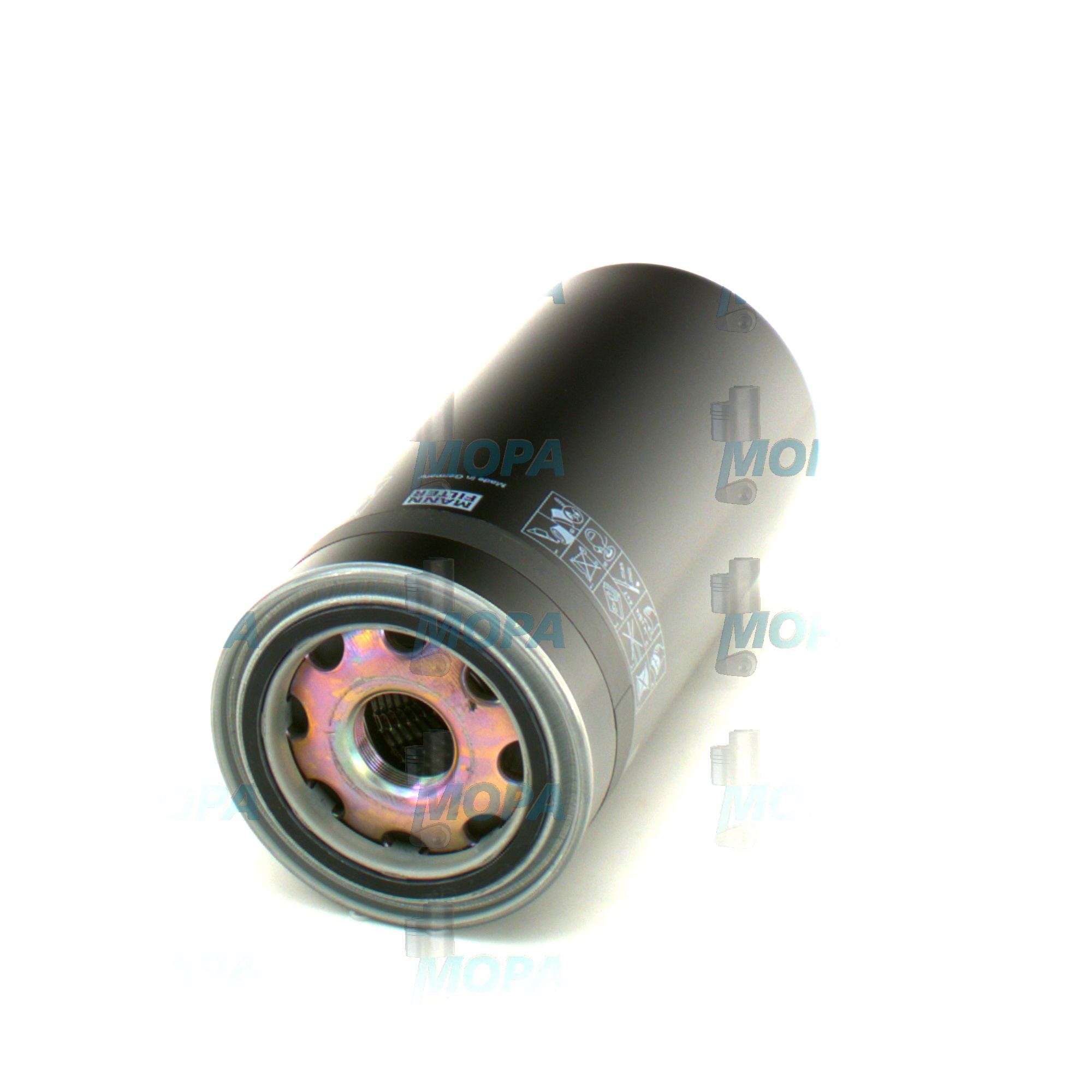20V4000G63 MTU gas engine for high‑efficiency power generation
The 20V4000G63 is a high‑output, V‑configuration gas engine designed to deliver dependable electrical power with excellent efficiency and low operating costs. While it belongs to the MTU 4000 series, the focus here is squarely on the 20V4000G63 itself: a robust, 20‑cylinder platform engineered for continuous duty in power plants, microgrids, and combined heat and power (CHP) projects where uptime and fuel economy matter most.
As a purpose‑built generation prime mover, the 20V4000G63 combines proven 4000‑series architecture with optimized combustion and advanced engine management. This results in stable operation at 50/60 Hz, fast load acceptance, and a strong performance-to-weight ratio—qualities valued by EPCs, operators, and technical buyers alike.
Technical characteristics of the 20V4000G63 MTU engine
At its core, the 20V4000G63 is a 20‑cylinder, V‑angle gas engine with a total displacement of roughly 95 liters (approx. 4.7–4.8 liters per cylinder, typical for the 4000 platform). It is turbocharged and charge‑air cooled, with an electronic control system that continuously optimizes fuel‑air ratio, ignition timing, and knock limits across the full operating map. Typical rated speeds are 1,500 rpm for 50 Hz grids and 1,800 rpm for 60 Hz, enabling direct coupling to generator sets for prime and continuous duty.
Depending on configuration and site conditions, power outputs for the 20V4000G63 generally reach into the multi‑megawatt class of electrical power for baseload generation. In CHP service, the package can be specified to deliver valuable thermal energy alongside electricity, supporting high overall efficiencies. Common features include lean‑burn combustion for low emissions, pre‑chamber ignition for stable flame propagation, and cylinder‑individual control strategies to balance performance and durability.
Key engineering elements that characterize the 20V4000G63 include a rigid, high‑strength crankcase; four‑valve cylinder heads; precision‑cooled pistons; and heavy‑duty turbocharger assemblies matched to the gas combustion profile. The control and monitoring suite typically integrates knock sensing, misfire detection, and protective logic—important for extended service intervals and predictable lifecycle planning.
- · 20‑cylinder V configuration for high power density
- · Approx. 95 L total displacement (4000‑series architecture)
- · 1,500/1,800 rpm ratings for 50/60 Hz grids
- · Lean‑burn, spark‑ignited combustion for efficient, clean operation
- · Turbocharged and charge‑air cooled for strong specific output
- · Electronic engine management with cylinder‑individual control
- · Designed for continuous duty in power generation and CHP
- · Proven MTU 4000 platform components and service concepts
Applications and operating benefits of the 20V4000G63
The 20V4000G63 is widely specified for industrial power plants, municipal utilities, district heating networks, microgrids, and large commercial facilities (such as data centers, airports, and hospitals) that demand resilient, cost‑effective electricity. In CHP schemes, captured heat from the engine jacket water and exhaust can be used for process heat or absorption chilling—maximizing total energy yield and lowering the levelized cost of energy.
Operators value the 20V4000G63 for its steady performance under variable loads, quick synchronization to grid frequency, and the ability to support black‑start or island‑mode strategies when configured with the appropriate controls. In gas‑rich environments, the engine’s fuel efficiency and long maintenance intervals translate into competitive lifecycle economics. Within the broader MTU ecosystem, the 20V4000G63 shares common design DNA with MTU marine engine and diesel engine counterparts, simplifying fleet standardization and technician training even though this variant itself runs on gas. For buyers searching by family naming conventions, terms like “20V4000G63 MTU,” “20V4000G63 marine engine” (for power‑barge or shoreside applications), and “20V4000G63 diesel engine” often appear in procurement workflows; the technical fit, however, is the gas‑fueled 20V4000G63 described here.
Why this engine is particularly common and valued:
It combines high electrical output in a compact footprint with sophisticated combustion control that maintains efficiency over a wide ambient and load range. The platform’s modular design simplifies overhauls, while its monitoring capabilities support predictive maintenance. For utilities pursuing fast‑track capacity, the 20V4000G63 offers short lead times to commissioning when integrated into standardized genset packages.
Use cases where the 20V4000G63 excels
Typical deployments include:
• Baseload or peaking power plants tied to local gas networks. • CHP installations serving factories, university campuses, greenhouses, and district heating loops. • Microgrids and islanded grids requiring stable, fuel‑efficient prime power with heat recovery potential. • Shoreside and port power projects where natural gas availability and emissions objectives favor lean‑burn reciprocating engines.
OEM spare parts suitable for 20V4000G63: performance, reliability, service life
High‑output gas engines rely on precisely matched components to maintain combustion stability, thermal balance, and mechanical integrity. OEM spare parts suitable for 20V4000G63 are engineered to the engine’s exact tolerances and materials specifications—critical for items such as spark plugs and ignition coils, valve train elements, pistons and liners, turbocharger components, charge‑air coolers, filtration media, seals, and sensors. Using parts that match the engine’s calibration ensures consistent knock margins, uniform cylinder loading, and predictable maintenance intervals.
For operators running continuous duty, the integrity of the parts supply directly affects uptime and total cost of ownership. OEM spare parts suitable for 20V4000G63 help preserve fuel efficiency, reduce unplanned stoppages, and support high availability figures expected in utility and industrial environments. They also align with the engine control unit’s strategies for ignition, detonation control, and emissions targets—minimizing recalibration effort after maintenance events.
MOPA is a reliable partner for OEM spare parts suitable for 20V4000G63. With a focus on technical correctness and traceable quality, MOPA supports planned maintenance kits, critical spares stocking, and rapid dispatch to minimize downtime. Technical buyers benefit from knowledgeable support that links maintenance scope to asset strategy—major overhauls, mid‑life refreshes, or condition‑based interventions—all centered on OEM spare parts suitable for 20V4000G63.
What this means for operators of the 20V4000G63
By aligning scheduled service with a consistent, high‑quality parts program, owners retain the engine’s designed efficiency and avoid premature wear on high‑value components. In practice, that means cleaner combustion, stable output at 50/60 Hz, and longer intervals between top‑end work—outcomes that stem from specifying OEM spare parts suitable for 20V4000G63 across the maintenance plan.
Conclusion: 20V4000G63 efficiency backed by proven parts supply
The 20V4000G63 stands out as a powerful, efficient gas engine for continuous power generation and CHP, combining a 20‑cylinder V design with advanced control for dependable, grid‑ready output. Its strengths—power density, fuel economy, and serviceability—make it a preferred choice for utilities and industrial sites seeking measurable lifecycle value.
MOPA supports this performance with OEM spare parts suitable for 20V4000G63, ensuring component consistency and reliable operation over the long term. For purchasers and technical decision‑makers, the combination of the 20V4000G63 and a robust supply of OEM spare parts suitable for 20V4000G63 is a practical path to sustained availability and optimized operating costs.














